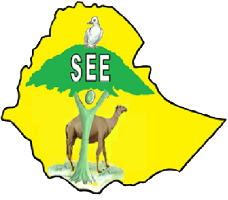-
General Assembly: At the top level, we have the General Assembly, which oversees the entire organization. This body typically consists of members representing various stakeholders, such as founders, donors, and community representatives. They play a vital role in setting the organization’s strategic direction, approving major decisions, and ensuring transparency and accountability.
-
Board of Directors: The Board of Directors directly reports to the General Assembly. This group of individuals is responsible for governance, policy-making, and fiduciary oversight. They ensure that the organization operates in alignment with its mission and legal obligations. Board members often bring diverse expertise, including legal, financial, and industry-specific knowledge.
-
CEO (Chief Executive Officer): The CEO is the highest-ranking executive in the organization. He leads the day-to-day operations, implement strategic plans, and manage the overall performance. The CEO is accountable to the Board and ensures that the organization’s mission is fulfilled efficiently and effectively.
-
Program Manager: Reporting to the CEO, the Program Manager oversees various programs and initiatives. His responsibilities include:
- Program Unit: This unit comprises officers responsible for specific program areas. Let’s break down some of these roles:
- Livelihood & Climate Resilience Officer: Focuses on sustainable livelihoods and strategies to enhance community resilience to climate-related challenges.
- WASH (Water, Sanitation, and Hygiene) Officer: Manages water supply, sanitation, and hygiene projects.
- Energy Officer: Coordinates energy-related programs, such as renewable energy projects.
- Environment Officer: Addresses environmental conservation, natural resource management, and sustainability.
- MEAL (Monitoring, Evaluation, Accountability, and Learning) Officer: Ensures program effectiveness, data collection, and impact assessment.
- Shelter Officer: Oversees housing and shelter initiatives.
- HR (Human Resources) Officer: Manages personnel matters, recruitment, and staff development.
- Finance Officer: Handles financial planning, budgeting, and financial reporting.
- Cash Management Officer: Manages cash flow and financial transactions.
- Procurement & Logistics Officer: Coordinates procurement of goods and logistics for program implementation.
- Program Unit: This unit comprises officers responsible for specific program areas. Let’s break down some of these roles:
-
Admin and Finance Manager: Responsible for administrative and financial matters within the organization. Their role includes overseeing:
- Admin & Finance Unit: This unit handles administrative functions (such as office management, facilities, and logistics) and financial management (including budgeting, accounting, and financial controls).
-
MEAL Coordinator: This role focuses on:
- Monitoring and Evaluation (MEAL): Ensuring that programs are monitored, evaluated, and adjusted based on data-driven insights.
-
Area Managers: These managers oversee specific geographical areas or regions where the organization operates. They are responsible for program implementation, community relations, and coordination with local authorities
